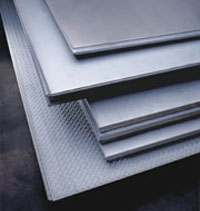| WOMEN IN TRANSPORTATION |
| Changing America's History |
|
Early
Travel
In the 19th century the primary means of early transportation were walking, horse and buggy, river boats, and steam ships. During this time women were hard at work in transportation.
Throughout these early years women also improved transportation by Another early invention was a combined horse-detacher and vehicle brake, patented by Annie H. Chilton of Baltimore in 1891. The device allowed for the simultaneous application of the brake and release of the horse, which reduced the chance of injuries to drivers. |

Above right: Two examples of Lukens, Inc. steel products. |
|
|